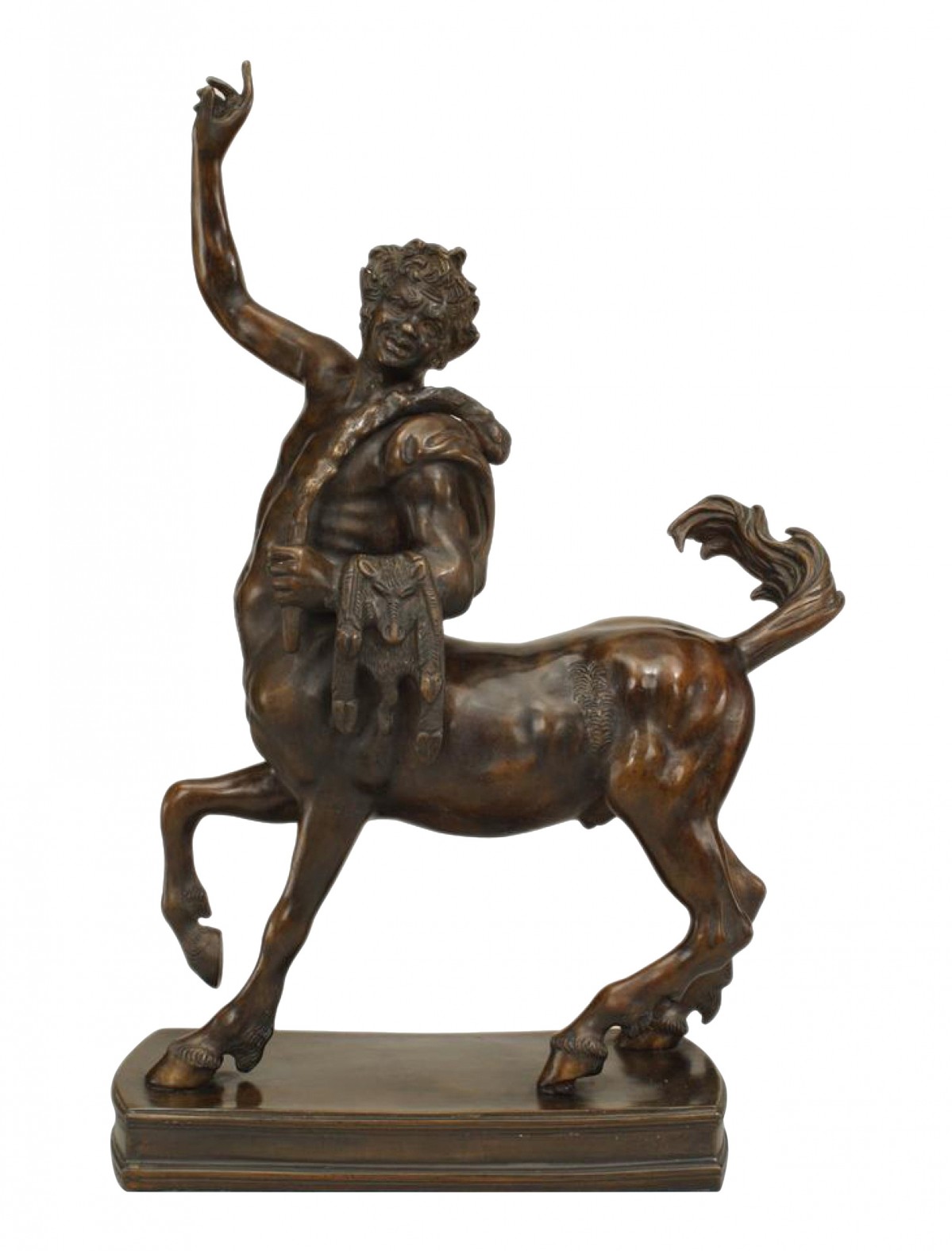X
{{ modalTitle }}
PLEASE FILL IN THE REQUIRED FIELDS.X
X
{{ modalTitle }}
Choose one of the options below.X
ITEM SUCCESSFULLY
ADDED TO PROJECT
Neo-Classic Bronze Centaur
 Italian
Italian Neo-classic
Neo-classic Cleared Sculpture
Cleared Sculpture Small Figures
Small Figures
Newel Warehouse
32-00 Skillman Ave
Long Island City NY - 11101
 (212) 758-1970
(212) 758-1970
Neo-Classic Bronze Centaur

Newel Warehouse
32-00 Skillman Ave
Long Island City NY - 11101
 (212) 758-1970
(212) 758-1970
 Cleared Sculpture
Cleared Sculpture Small Figures
Small FiguresNeo-classic
Neo-classic refers to the second revival of classic design for interior decoration in the 18th century. This style was inspired by excavations of Pompeii and Herculaneum that begun in 1738. Common motifs include dolphins, lyres, and urns.
Patina
Term used to designate a shift in wear or change in material on the surface of furniture, due to age, exposure, and hand-rubbing. Usually used to describe a shift in color on metal as oxidization occurs such as the greenish tint, formed on copper or bronze after long exposure.
Neo-classic
Neo-classic refers to the second revival of classic design for interior decoration in the 18th century. This style was inspired by excavations of Pompeii and Herculaneum that begun in 1738. Common motifs include dolphins, lyres, and urns.
Patina
Term used to designate a shift in wear or change in material on the surface of furniture, due to age, exposure, and hand-rubbing. Usually used to describe a shift in color on metal as oxidization occurs such as the greenish tint, formed on copper or bronze after long exposure.
Neo-classic
Neo-classic refers to the second revival of classic design for interior decoration in the 18th century. This style was inspired by excavations of Pompeii and Herculaneum that begun in 1738. Common motifs include dolphins, lyres, and urns.
Patina
Term used to designate a shift in wear or change in material on the surface of furniture, due to age, exposure, and hand-rubbing. Usually used to describe a shift in color on metal as oxidization occurs such as the greenish tint, formed on copper or bronze after long exposure.












